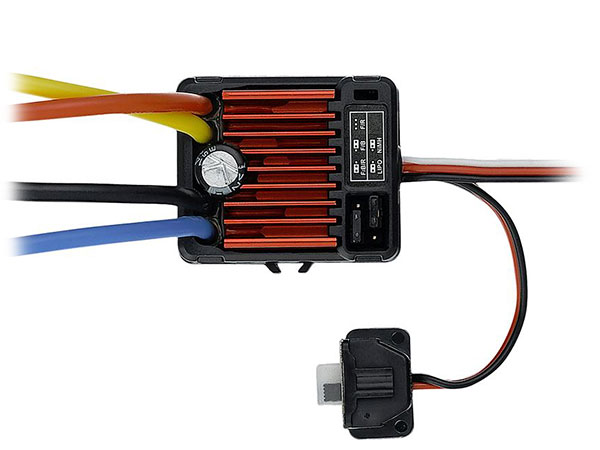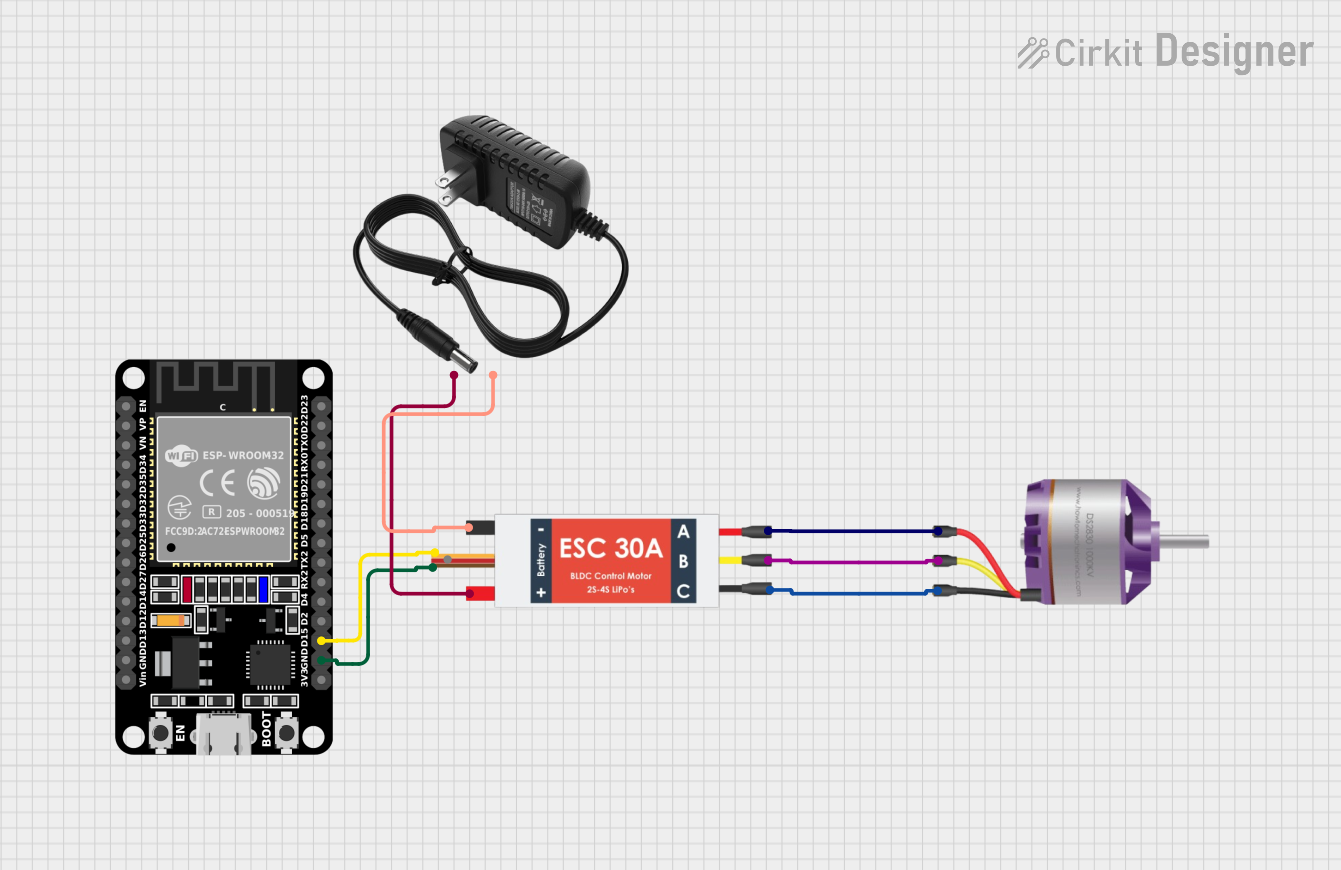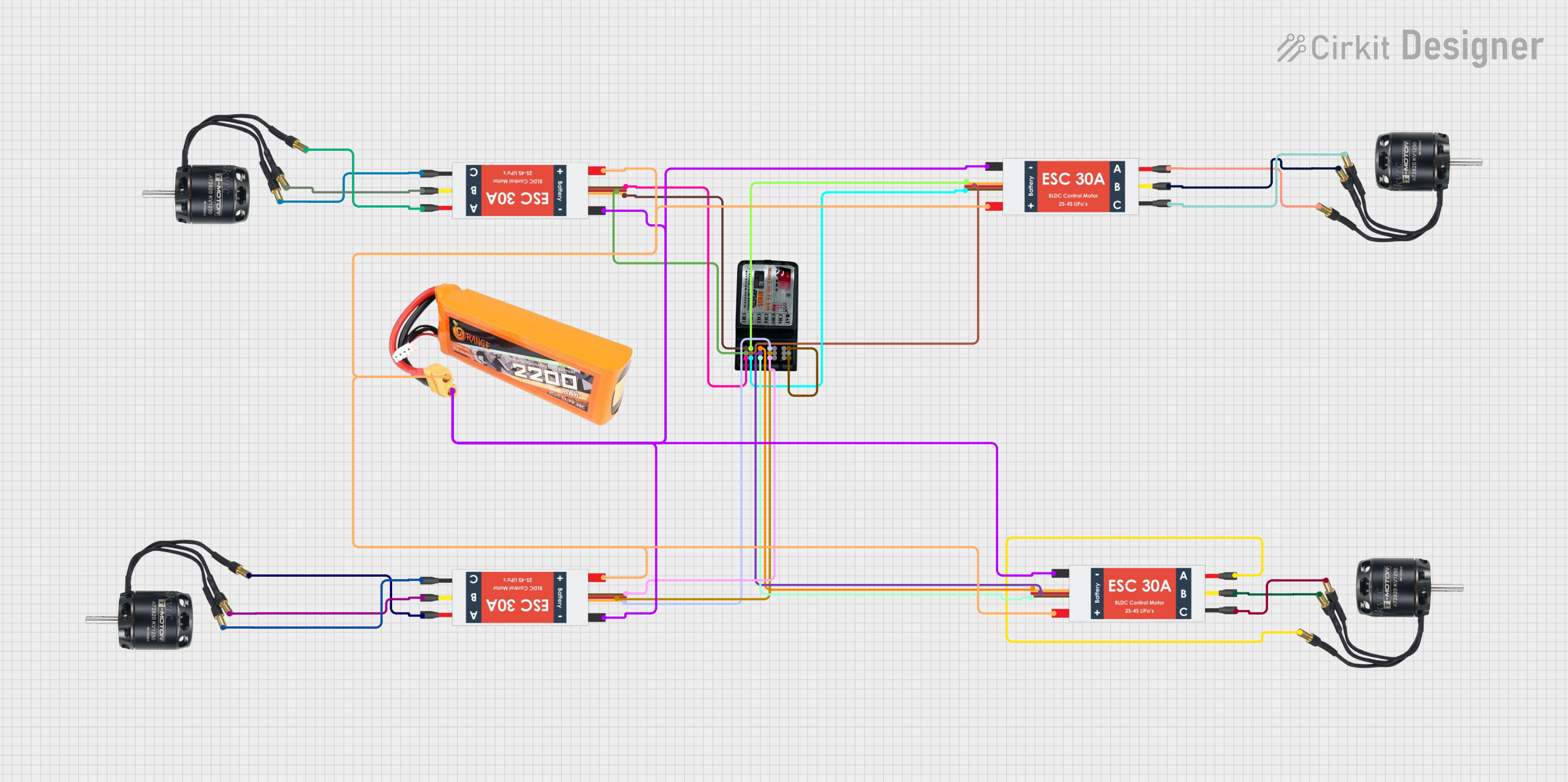
How to Use Esc brushed motor: Examples, Pinouts, and Specs

 Design with Esc brushed motor in Cirkit Designer
Design with Esc brushed motor in Cirkit DesignerIntroduction
The Fimonda 60A ESC is an Electronic Speed Controller designed to regulate the speed and direction of a brushed DC motor. It modulates the power supply to the motor through controlled bursts of current. This component is essential in applications such as remote-controlled cars, boats, and other hobbyist projects where precise motor control is required.
Explore Projects Built with Esc brushed motor

 Open Project in Cirkit Designer
Open Project in Cirkit Designer
 Open Project in Cirkit Designer
Open Project in Cirkit Designer
 Open Project in Cirkit Designer
Open Project in Cirkit Designer
 Open Project in Cirkit Designer
Open Project in Cirkit DesignerExplore Projects Built with Esc brushed motor

 Open Project in Cirkit Designer
Open Project in Cirkit Designer
 Open Project in Cirkit Designer
Open Project in Cirkit Designer
 Open Project in Cirkit Designer
Open Project in Cirkit Designer
 Open Project in Cirkit Designer
Open Project in Cirkit DesignerCommon Applications and Use Cases
- Radio-controlled (RC) vehicles
- Robotics
- Educational projects
- DIY electronic builds
Technical Specifications
Key Technical Details
- Continuous Current: 60A
- Burst Current: 360A (10 seconds)
- Input Voltage: 6.6V - 8.4V (2S LiPo or 5-7 NiMH)
- BEC Output: 5.6V/2A
- Motor Type: Brushed DC motors
- Dimensions: 34 x 34 x 30 mm
- Weight: 60g
Pin Configuration and Descriptions
| Pin Number | Function | Description |
|---|---|---|
| 1 | Battery Positive (+) | Connect to the positive terminal of the battery |
| 2 | Battery Negative (-) | Connect to the negative terminal of the battery |
| 3 | Motor Output A | Connect to one terminal of the brushed motor |
| 4 | Motor Output B | Connect to the other terminal of the brushed motor |
| 5 | Receiver Input | Connect to the throttle channel of the RC receiver |
Usage Instructions
How to Use the Component in a Circuit
Connect the Motor:
- Attach the motor wires to the Motor Output A and B pins of the ESC. The motor direction can be reversed by swapping these connections.
Connect the Battery:
- Securely connect the battery to the ESC, ensuring correct polarity.
Connect the Receiver:
- Plug the ESC's receiver cable into the throttle channel of the RC receiver.
Calibration (if required):
- Follow the manufacturer's instructions to calibrate the ESC with your transmitter for proper throttle range.
Power On:
- Turn on the transmitter, then connect the battery to the ESC. The motor should now respond to throttle input.
Important Considerations and Best Practices
- Ensure that the ESC's current and voltage ratings are compatible with the motor and battery.
- Always disconnect the battery when making changes to the connections.
- Use appropriate wire gauge for the motor and battery connections to handle the current.
- Secure all connections to prevent vibrations from causing a loss of contact.
- Do not exceed the recommended input voltage as it may damage the ESC.
- Keep the ESC away from high temperatures and ensure adequate cooling during operation.
Troubleshooting and FAQs
Common Issues
Motor does not respond to throttle:
- Check all connections for proper contact and correct polarity.
- Ensure the transmitter and receiver are properly bound and the ESC is calibrated.
ESC overheats:
- Make sure the motor's current draw is within the ESC's specifications.
- Improve airflow around the ESC to enhance cooling.
Inconsistent motor performance:
- Inspect the motor and ESC for any signs of damage or wear.
- Verify that the battery is fully charged and in good condition.
Solutions and Tips for Troubleshooting
- If the motor direction is incorrect, swap the connections at Motor Output A and B.
- Reset the ESC to factory settings if calibration does not resolve throttle issues.
- Check for firmware updates from Fimonda that may improve performance or fix known issues.
FAQs
Q: Can I use this ESC with a brushless motor? A: No, the Fimonda 60A ESC is designed specifically for brushed motors.
Q: What should I do if the ESC does not power on? A: Verify the battery voltage and connections. If the issue persists, the ESC may be faulty and require replacement.
Q: How do I program the ESC? A: Programming options vary by model. Refer to the Fimonda user manual for specific programming instructions.
Q: Is a heatsink required for this ESC? A: It depends on the application and operating conditions. If the ESC is operating near its maximum ratings or in a high-temperature environment, a heatsink is recommended.
Note: This documentation is provided for informational purposes and should be used in conjunction with the Fimonda user manual and safety guidelines. Always follow the manufacturer's recommendations for the best results and longevity of your components.